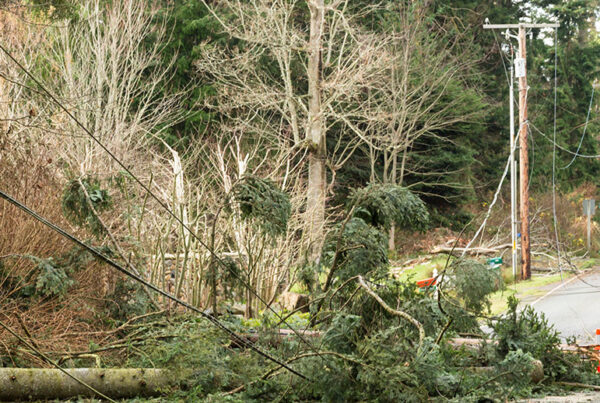
The phrase “all other things being equal” has been a simplifying assumption frequently employed in many situations. But in the data-driven world in which utilities now operate, this common phrase should be viewed with increased skepticism, including decision-making associated with customer segmentation data.
Advanced analytics has provided insights into a wide range of customer segmentation-based situations, and this includes situations worthy of quick review here, showing where pitfalls have been avoided by dispensing with simplifying assumptions of the past.
During Utility Analytics Summit in Irvine, CA in April 2018, various analytics projects involving utility customer engagement efforts showed how pitfalls of the past were avoided by moving away from simplifying assumptions of the past.
Customer Survey data
Whether the discussions and presentations involved the use of machine learning to analyze free-text response data from customer satisfaction surveys or speech-to-text data from complaint calls, previously “anecdotal” data can now be systematically analyzed with rigor to gain deeper insights.
The traditional method of simply reading customer responses from surveys remains helpful. However, application of advanced analytics enables actionable improvements to be defined beyond general information about customers wanting more accurate and timely data about outage restoration, or wanting direct human contact over the phone rather than answers from an automated voice response system.
In addition, analysis can help in separating one-time unique events from events that are evidence of a pattern in need of improvement. Such insights can stem from correlation of customer survey response data with other data. Sources for correlation include data from trouble calls or from other contacts between the customer and the utility’s customer service personnel. Such additions to customer survey data could include contacts made during outages or during billing-related interactions, as well as demographic data.
By correlating such data with the customers location, historical data sheds additional insight regarding the number and duration of outages experienced by the customer.
Avoiding pitfalls and false assumptions
These and other data-driven analytics insights and perspectives, when combined holistically, help utilities involved to avoid making false assumptions about customer energy usage and customers’ potential participation in new programs.
For example, it is easy to assume newer homes will generally have more efficient appliances and will be better insulated than older homes, and to therefore also assume they’ll not be as good of a candidate target population for energy efficiency programs. But unique characteristics associated with one or another utility’s service territories could easily make such an assumption false, leading to incorrect projections of energy usage or new energy program participation levels. In addition, the complexities of customer behaviors and needs associated with renters and with lower income customers requires a higher level of customer-specific data-driven insight to optimize program design and associated decision-making.
Consider again the question of whether new homes are relatively unattractive as candidates for Energy Efficiency programs, compared to older homes. In this regard, sample assumption-based pitfalls which may be debunked by more advanced analytics work include:
- Contrary to expectations, newly constructed may be better candidates for energy efficiency programs than older ones for many reasons, including:
- Large new subdivisions of suburban homes generally have less tree cover than older suburban homes, which increases air-conditioning load in the summer and heading load in the winter As highlighted in a recent customer energy saving tips from FirstEnergy,”carefully positioned trees can reduce a household’s energy consumption for heating and cooling by up to 25 percent;
- New homes may be in areas which could involve higher electricity consumption, for example due to there not being gas service, driving water heaters, HVAC and dryers to be 100% electric rather than their running on natural gas.
- Similarly, it may be natural to assume that lower income customers consume more electricity than higher income ones, due to their living in older, poorly-insulated homes. But such customers are also more likely to live in smaller dwellings, which would reduce their energy footprint.
Time of Use Rates
The complexities associated with behavior of customers based on their economic status and other demographics also comes to the forefront when considering policy and planning issues.
A good example is provided by policy debates associated with the benefits of Time of Use (TOU) rates, including the range of issues in this regard discussed by the California Public Utilities Commission (CPUC) and utilities under its jurisdiction.
It is all “getting real” very quickly in California, when it comes to TOU rates, since the utilities in California, according to the CPUC, “will collectively default approximately 770,000 customers onto TOU rates in spring 2018. This ‘soft launch’ will ensure that the utilities’ IT systems, business processes and customer service centers are prepared for the full rollout of default TOU in 2019.”
The California Public Utilities Commission (CPUC) reported on its Time of Use Opt-In Pilots based on 2016 Summer Results, in a May 2017 report titled Actions to Limit Utility Costs and Rates. According to the report, in 2016, utilities for approximately 60,000 customers in California launched opt-in Time of Use pilot programs to evaluate the performance of various TOU rate options. Initial findings, with regard to TOU rate impacts on participant load shift, billing impacts, and customer surveys, were reported to “have been encouraging,” as follows:
“In 2016, the utilities launched opt-in TOU pilot studies to evaluate customers’ response
- Load reductions during peak hours generally range from 4-6%, or from 0.04-0.06 kW
- Most PG&E and SCE customers experienced higher summer bills on the TOU rate than they would have on the tiered rate, but some were able to mitigate some of the increase through changes in behavior.
- SDG&E customers’ summer bills were comparable whether on the TOU rate or on the tiered rate.
- Customers on TOU rates engaged in load shifting behavior much more frequently than customers on tiered rates.
- Satisfaction ratings were comparable between customers on TOU rates and tiered rates.
- Low-income customers had lower levels of understanding of peak hours than non-low income customers.
- Less than 3% of customers opted-out of any of the rates tested.
- No strong indications that any particular rate or rates are preferable to others, which suggests the value in giving customers more than one TOU rate option.
- Lower levels of understanding amongst the low-income population suggest a need to identify more effective ways to communicate with low-income customers. [Page 6, CPUC 2017 SB695 Report, Actions to Limit Costs and Rates.]
Fully three years earlier, the documentation below from a 2014 CPUC report shows the following pro/cons for TOU at the time.
“The primary arguments identified by staff and parties in favor of TOU rates include:
- TOU rates provide price signals that encourage customers to lower their bills through peak load shifting and reductions.
- TOU rates encourage customer behavior changes and adoption of energy management technologies that lower overall electric system costs and benefit the environment.
- TOU rates reflect cost causation and marginal cost.
- TOU rates are easier to understand than inclining block rates.
- TOU rates provide customer choice to better control their energy bills.
The main arguments against TOU rates identified by staff and parties include:
- TOU rates adversely impact low-income customers with less discretionary load to shift.
- The conservation benefits of TOU rates may be overstated.
- TOU rates are harder to understand than inclining block rates.
Source: Energy Division Staff Proposal on Residential Rate Reform, Pages 36 37, CPUC.
The arguments in general terms shown for 2014, considering the subsequent data-driven findings highlighted above the 2014 data, show the level of detail and depth of customer segmentation-driven insights required to move forward.
Whether in California or elsewhere, the wide-ranging benefits of new programs for engaging with customers require analytics-driven planning processes to address issues rapidly in order to help move policymakers more rapidly in the best directions, and in to optimize and accelerate planning processes for the benefit of all utility customers.














